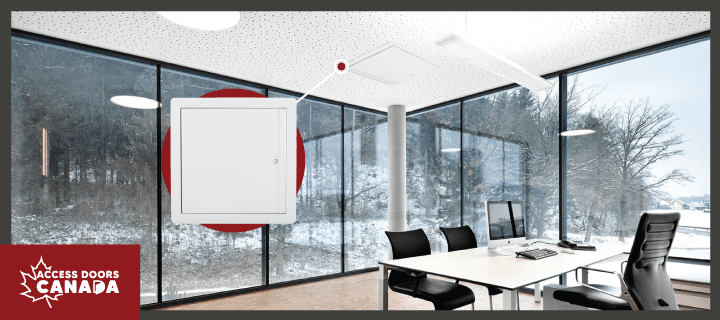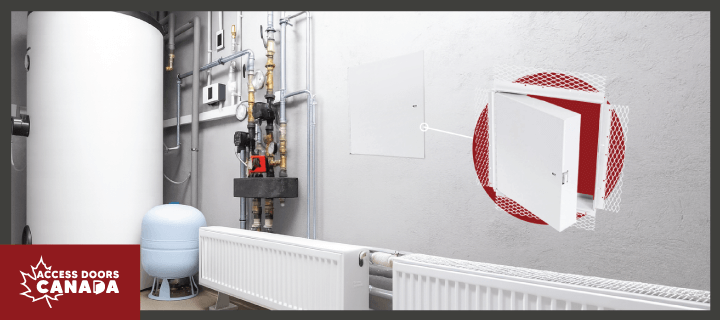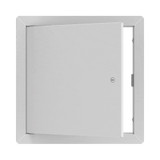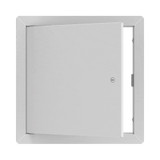The Importance of Watertight Access Doors for Canadian Oil & Gas Projects
In a remote oil and gas facility in Canada, harsh winters and unpredictable storms pose significant challenges for operations. Offshore platforms are subjected to relentless waves and corrosive salt spray, leading to water intrusion and jeopardizing equipment and safety. Installing watertight access doors is crucial for protecting control and pump rooms.
Understanding the Threat
Water intrusion poses significant risks to oil and gas facilities in Canada. It can speed up corrosion in critical equipment, lead to operational downtime, and increase costs.
Water intrusion raises safety concerns, such as electrical failures resulting in fires, explosions, and hazardous material spills, which may incur regulatory penalties and cause environmental damage.
Coastal facilities are particularly vulnerable to flooding and saltwater corrosion, while inland sites often face issues related to condensation. The long-term effects of water intrusion can compromise structural integrity, need early equipment replacements, and lead to higher maintenance expenses.
Key Features of Effective Watertight Access Doors
Choosing the right watertight access doors and panels is crucial for oil and gas facilities, especially when addressing environmental challenges. Here are the key features that ensure their effectiveness:
- Material Selection: Stainless steel is ideal for its durability in harsh Canadian conditions. It offers excellent corrosion resistance against saltwater and extreme temperatures, resulting in a longer lifespan and reduced maintenance costs.
- Design and Construction: Effective watertight doors should withstand significant pressure and prevent water ingress. High-quality sealing mechanisms and robust construction are essential. Also, skilled professionals' proper installation is critical for achieving an exact fit and seal.
- Optimal Performance Features: The door's water head rating and pressure resistance are essential for handling high water pressure, particularly in flood-prone or offshore locations. Durable, replaceable gaskets are important for keeping a proper seal. Furthermore, the door should allow for easy emergency operation and have accessible components for inspections and repairs.
Applications in Canadian Oil & Gas Facilities
Canadian oil and gas operations face unique challenges that need robust protective measures, particularly in critical areas. Watertight access doors are essential for safeguarding vital infrastructure.
Critical Areas for Watertight Protection
- Electrical Rooms and Control Panels: Sensitive equipment in these areas is vulnerable to water damage, which can lead to significant disruptions.
- Pump Rooms and Mechanical Equipment: Machinery crucial for production can suffer severe damage from water intrusion, resulting in costly repairs.
- Pipeline Access Points: These locations need regular maintenance, making watertight doors necessary to prevent water ingress, especially in flood-prone areas.
- Storage Tank Access: To ensure the integrity of their contents, it is vital to protect these tanks from water contamination.
- Areas Near Water: Locations such as shorelines and river crossings are at an elevated risk of water ingress, making strong watertight solutions essential.
Benefits of the ADC-ADWT-SS Airtight/Watertight Access Door
The ADC-ADWT-SS airtight / watertight access door - Stainless Steel, constructed from stainless steel, protects against water intrusion, ensuring reliable operation and reducing the risk of malfunctions. Its durable design not only lowers maintenance costs but also enhances efficiency.
Additionally, it improves safety and compliance by preventing water-related failures and protecting against environmental contamination.
Ensuring Long-Term Performance
Proper installation and consistent maintenance are essential to ensure the effectiveness and reliability of watertight access doors.
Best Practices for Installation
- Sealing and Integration: Use high-quality sealants to integrate with surrounding structures, preventing water ingress.
- Professional Installation: It is advisable to have the doors installed by professionals. This ensures proper alignment and sealing, reducing the risk of installation errors.
Maintenance and Inspection
Regularly inspect gaskets and seals for wear or damage and promptly replace any compromised components. Conduct routine cleaning and lubrication of moving parts to confirm that the doors work smoothly.
During inspections, look for signs of corrosion or misalignment to keep equipment efficient operation.
Actionable Insights for Facility Managers and Contractors
When selecting watertight access doors for oil and gas projects in Canada, specifications must align with environmental and operational requirements. Prioritizing quality is crucial for ensuring reliability, even if it means a higher initial investment.
Consider the total ownership cost, including the purchase price, maintenance, and potential downtime. Investing in high-quality doors can prevent water damage and lead to significant cost savings over time.
Establishing a regular maintenance schedule to inspect gaskets, seals, and hardware will help extend the doors' lifespan. Options like the ADC-ADWT-SS access door provide excellent water protection and enhance safety.
Conclusion
Robust infrastructure protection is essential for Canadian oil and gas projects, where water intrusion can compromise operational integrity and profitability. Installing watertight access doors is crucial for ensuring long-term success, as it protects critical equipment and enhances personnel safety.
Investing in high-quality, watertight solutions is vital for the reliability and safety of oil and gas facilities. Visit Access Doors Canada for more valuable insights into these essential components of the industry.









